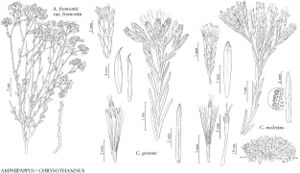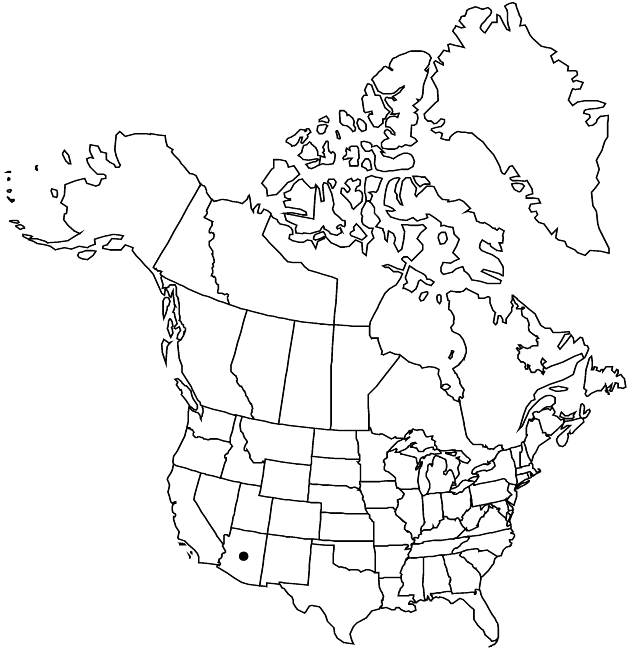Difference between revisions of "Chrysothamnus molestus"
Madroño 17: 222. 1964.
imported>Volume Importer |
imported>Volume Importer |
||
| Line 60: | Line 60: | ||
|publication year=1964 | |publication year=1964 | ||
|special status=Illustrated;Endemic | |special status=Illustrated;Endemic | ||
| − | |source xml=https:// | + | |source xml=https://bitbucket.org/aafc-mbb/fna-data-curation/src/2e0870ddd59836b60bcf96646a41e87ea5a5943a/coarse_grained_fna_xml/V19-20-21/V20_414.xml |
|tribe=Asteraceae tribe Astereae | |tribe=Asteraceae tribe Astereae | ||
|genus=Chrysothamnus | |genus=Chrysothamnus | ||
Latest revision as of 20:02, 5 November 2020
Shrubs, 8–20 cm; with woody, highly branched caudices, bark dark gray, highly fibrous with age. Stems ascending, green, ± puberulent, stipitate-glandular. Leaves erect to closely ascending; sessile; blades with ± evident midnerves, linear to narrowly elliptic, 7–20 × 0.7–1.5 mm, sulcate, sometimes apiculate, apices acute, faces moderately puberulent, uniformly stipitate-glandular. Heads in small cymiform to racemiform arrays. Involucres subcylindric, 9–11 × 2.5–3.5 mm. Phyllaries ± 20 in 4–5 series, in 4–5 strong vertical ranks, tan, often with green or dark subapical splotch, midnerves often obscure, linear or lanceolate to elliptic, 2–9 × 0.5–1.3 mm, unequal, outer ± herbaceous, inner chartaceous, strongly keeled, apices acute to rounded, tip cupped, faces of outer glabrous or puberulent. Disc florets 5; corollas 5.5–7.5 mm, lobes 0.9–1.5 mm; style branches 2.7–3.2 mm, appendages 1–1.7 mm. Cypselae tan, elliptic, 4.2–6 mm, mostly 5-ribbed, faces glabrous, sparsely glandular; pappi tan, 6–7.5 mm. 2n = 18.
Phenology: Flowering late summer–fall.
Habitat: Rocky soils, mostly on limestone pinyon-juniper woodland
Elevation: 1800–2400 m
Discussion
Chrysothamnus molestus is known only from Coconino County. It is in the Center for Plant Conservation’s National Collection of Endangered Plants.
Selected References
None.

